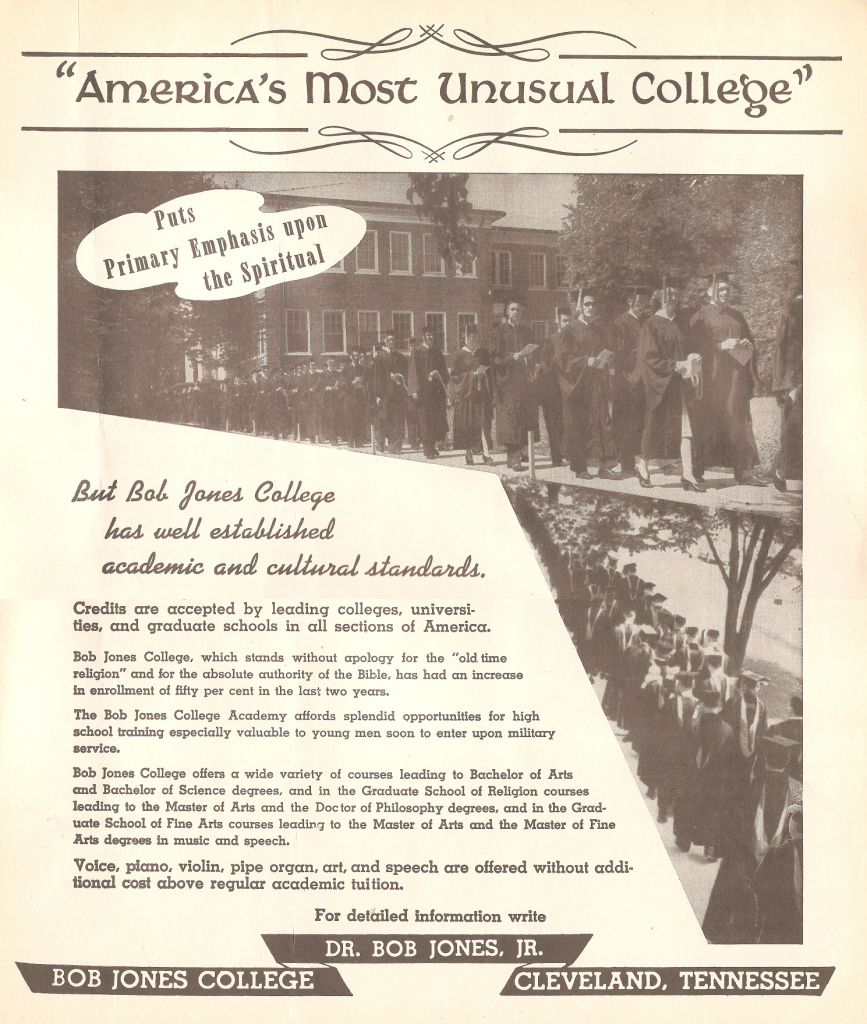My 1965 Encounter with Segregation
Dotty and I watched the film Hidden Figures recently. We really enjoyed it. I was especially touched by the scenes related to the fact that “Colored” women had to use a separate bathroom at Langley in Virginia, beginning in the 1940’s.
I was born in Barstow, California, and then lived in Huntington Park, East L.A., Reseda and Canoga Park until age 20. I was accustomed to mingling with people across the ethnic spectrum, but while living in East L.A. as a 9-year old I did see some racial tensions surface between the White (where I lived), Black and Hispanic apartment complexes adjacent to each other.
The reason this part of the story line in Hidden Figures resonated with me was because my baptism into prejudice was connected to a bathroom. As a new believer in 1964-65 I was connected to a Fundamentalist church in Canoga Park, California. The pastor channeled the young people to Bob Jones University. He encouraged me to transfer from CalState at Northridge as an Art Major to BJU to be a “preacher boy,” and I did.
In late August 1965 I began a road trip with Mike McCubbins and Bob Stark to Greenville, South Carolina. I could write a small book about the details of that trek.
When we got to somewhere in Texas, we stopped to get gas. On the other side of our pump was a race car on a trailer bed and the engine was revving very loudly. While Mike was filling up, I cupped my hands and yelled into his ears, “I’m going to the bathroom.” Bob also walked away from the car to relieve himself. We both came back to the car. Bob looked at me and said, “Where did you go?” I replied, “To the bathroom.” He said, “Where?” I pointed to the side of the building. Bob exclaimed, “That’s the Black restroom!” The emotions I felt upon hearing those words were varied – stunned, shocked, confused, angry. The place I went to had a dirt floor and didn’t smell good, but I just figured “this is the bathroom this gas station provides.” I was very weary from the ordeal of our trip, so it took me a while to process Bob’s words about a separate place for the “Colored.”
But here’s the real irony: I had no idea then that we were actually on a journey to a school that did not admit Afro-Americans as students or faculty! I trusted the pastor’s counsel, as he strongly believed that BJU was the only institution where one could get a Christ-honoring education.
In my second year at BJU, I came across a booklet that contained a 1960 message by Bob Jones Sr., Is Segregation Scriptural? The answer Bob Sr. gave was “Yes.” In this booklet he was sure, “If you are against segregation and against racial separation, then you are against God Almighty . . . . God is the author of segregation.” After Dr. Bob Sr.’s funeral, my fiancée, Dotty, myself and Jim West left BJU in January, 1968, and transferred to Covenant College, Lookout Mountain, Tennessee.
In 1982, Ted Koppel interviewed Bob Jones III on “Nightline.” Unfortunately, Ted did not know some of the right questions to ask, and Bob III avoided the actual issues. I then wrote a booklet and attempted to identify the real issues at stake, Segregation or Scripture? The Missing Issue in the Case of IRS vs. BJU.
In 1966 I was present in a chapel service where Bob Jones Jr. said, “Blacks are at their best when they serve tables,” which was aired to the community and beyond via BJU’s radio station, WMUU. Why should we be surprised by such remarks once we realize the little-known fact that this school at its inception received impetus from and had backing from the Ku Klux Klan?
Beginning in Panama City, Florida, in 1927, BJU vigorously and dogmatically carried out a segregationist policy for more than fifty years. “With the help of wealthy supporters, Bob Jones founded a college near Panama City, Florida, in 1926. Bibb Graves, who had just been elected governor of Alabama with the official backing of the Ku Klux Klan, gave the keynote address at the groundbreaking ceremony. When classes began in 1927, admission of students was officially restricted to members of the white race, a policy that persisted until 1971.” (http://www.jbhe.com/news_views/62_bobjones.html 2009)
“In the late 1920s, Jones, like Billy Sunday (who was an Iowan), accepted contributions for his evangelistic campaigns from the Ku Klux Klan. Jones also supported members of the Klan, notably his friend, Alabama Governor Bibb Graves, for political office. Although Jones rejected lawlessness and lynching, he sympathized with the Klan’s professed endorsement of religious orthodoxy.” (https://en.wikipedia.org/wiki/Bob_Jones_Sr).
In 1960, Bob Sr. asserted, “We had planned to build a school, just like BJU, here in the South, for colored people . . . . We wanted to build a great school where colored people could come and get all the culture that we offer here at BJU.” Only those with a sense or experience of BJU’s sub-culture can appreciate what must have been the unbelievable angst that lay beneath then BJU President Stephen Jones’ 2008 confession that the school’s past racial policies were informed by the world, not Scripture. The prevailing atmosphere at BJU was that everything the school did was right and Bible-based – no questions asked; no griping tolerated. Sayings of Bob Jones Sr. were posted above the chalkboards in every classroom. The repudiation of the Founder’s long-standing view of segregation by the BJU Administration would indeed require the intersection of tremendous pressures from varied sources.
- Jon Zens, October, 2018
Segregation or Scripture? is available at jonzens.com and via PDF from the author. The advertisement below appeared in The Etude music magazine, June, 1944.


 Author, speaker, editor of Searching Together, itinerant encourager of relational communities.
Author, speaker, editor of Searching Together, itinerant encourager of relational communities.
Speak Your Mind